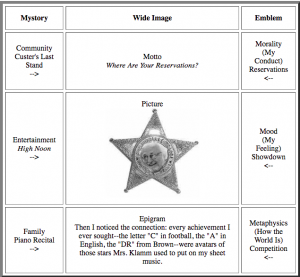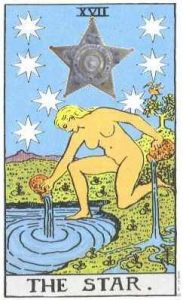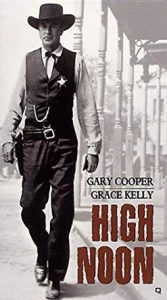TPE: Emblem, Wabi Sabi 2
 –Tenor (Themata): Catechism. The image on the left is the emblem Ulmer generated from his mystory, leading to design of his wide image in Noon Star. The formal rules from Koren’s relay generates theopraxesis by requiring that the answer to the catechism questions must be derived from one of the popcycle stories, each story used once only. The three capabilities are expressed in Wabi-Sabi by three M’s (resonating with the H’MMM disciplines): Metaphysics (Theoria); Morality (Praxis); Mood (Poiesis). Egents ask themselves:
–Tenor (Themata): Catechism. The image on the left is the emblem Ulmer generated from his mystory, leading to design of his wide image in Noon Star. The formal rules from Koren’s relay generates theopraxesis by requiring that the answer to the catechism questions must be derived from one of the popcycle stories, each story used once only. The three capabilities are expressed in Wabi-Sabi by three M’s (resonating with the H’MMM disciplines): Metaphysics (Theoria); Morality (Praxis); Mood (Poiesis). Egents ask themselves:
1) which of the popcycle stories, received as a fable (parable), expresses their understanding of how the world works, the character of reality. The Japanese tradition answers, “Things are either devolving toward, or evolving from, nothingness.” For Ulmer, the Family story of the botched piano recital, the red star (not gold or silver) on the sheet music, is a parable of a reality in which one is continuously judged in endless competitions. His epigram describes that condition.
2) Morality (Spiritual Values): which popcyle story is a fable of how one must act, given the character of reality? Wabi-Sabi proposes to get rid of what is unnecessary, ignore material hierarchy. For Ulmer, Custer’s foolish ambition serves as a negative example, a fable warning against Custer’s desire for glory. Ulmer’s motto expresses his lesson: Where are your Reservations?
 3) The third question is Mood: given the necessity to act in that way, in a world of that character, how do I feel? Wabi-Sabi advises acceptance of the inevitable and appreciation of the cosmic order. Ulmer found his state of mind expressed in High Noon as a fable of duty: despite his contempt for the hypocritical community, the sheriff fought the gang of killers, after which he threw away the tin star. This gesture of discarding the badge of status determined the tin star as the icon of the emblem. In practice it is best to decide which popcycle story supplies the picture, and which question of the catechism that story answers, and the rest of the emblem follows from there.
3) The third question is Mood: given the necessity to act in that way, in a world of that character, how do I feel? Wabi-Sabi advises acceptance of the inevitable and appreciation of the cosmic order. Ulmer found his state of mind expressed in High Noon as a fable of duty: despite his contempt for the hypocritical community, the sheriff fought the gang of killers, after which he threw away the tin star. This gesture of discarding the badge of status determined the tin star as the icon of the emblem. In practice it is best to decide which popcycle story supplies the picture, and which question of the catechism that story answers, and the rest of the emblem follows from there.
The wide image has no innate form, and is not confined to emblem poetics. It is inchoate, accessed intuitively, acquired during the early years of embodied visceral education. It may take many forms and manifest itself within the creative production of an egent. The heuretic frame of electrate pedagogy moves egents through the transition from a condition of privation, Steresis, impotence, potentiality of capability (Dunamis, Virtuality) into Energeia, Actualization, raising consciousness of their positioning and disposition relative to the archive of world culture recording in infinite variation the unfolding of the work of realization of life and death. Konsult is equipment for living (Kenneth Burke), thus, empowering in principle the egent with the resources of civilization available for a fatal encounter with disaster.

 –How an Image becomes Wide. Koren demonstrates how a detail of the world is selected as a vehicle for a poetic image: for example, a worn shingle on an old hut, with a streak of rust descending from an iron nail. The tenor (theme) of this vehicle is coded in Japanese traditional culture, relative to the wisdom metaphysics of Buddhism, to express an existential insight into time and entropy known as wabi-sabi. “Wabi-Sabi can be called a ‘comprehensive’ aesthetic system. Its world view, or universe, is self-referential. It provides an integrated approach to the ultimate nature of existence (metaphysics), sacred knowledge (spirituality), emotional well-being (state of mind), behavior (morality), and the look and feel of things (materiality)” (Koren, 41). The instruction was not to seek Wabi-Sabi in one’s own experience, but the equivalent, the mood and atmosphere, to find one’s personal version of what was modeled in Japanese tradition. The folk traditions of Blues into Jazz in global Creole syncretism (mufarse into tango, saudade into samba) is central to the thymotic and erotic dimension of world materialized in digital electracy. Koren’s analysis demonstrates how to expand the two-part vehicle and tenor of image into a six-part inventory. Students generated their emblems productive of wide image by answer six questions posed by Koren: three for vehicle; three for tenor. The three questions addressing tenor (themata) are the same three articulated in the catechism of modernism, directing theopraxesis. One implication, to be developed further, is that the system of capabilities is not confined to the Western Tradition, but functions globally across cultures and civilizations.
–How an Image becomes Wide. Koren demonstrates how a detail of the world is selected as a vehicle for a poetic image: for example, a worn shingle on an old hut, with a streak of rust descending from an iron nail. The tenor (theme) of this vehicle is coded in Japanese traditional culture, relative to the wisdom metaphysics of Buddhism, to express an existential insight into time and entropy known as wabi-sabi. “Wabi-Sabi can be called a ‘comprehensive’ aesthetic system. Its world view, or universe, is self-referential. It provides an integrated approach to the ultimate nature of existence (metaphysics), sacred knowledge (spirituality), emotional well-being (state of mind), behavior (morality), and the look and feel of things (materiality)” (Koren, 41). The instruction was not to seek Wabi-Sabi in one’s own experience, but the equivalent, the mood and atmosphere, to find one’s personal version of what was modeled in Japanese tradition. The folk traditions of Blues into Jazz in global Creole syncretism (mufarse into tango, saudade into samba) is central to the thymotic and erotic dimension of world materialized in digital electracy. Koren’s analysis demonstrates how to expand the two-part vehicle and tenor of image into a six-part inventory. Students generated their emblems productive of wide image by answer six questions posed by Koren: three for vehicle; three for tenor. The three questions addressing tenor (themata) are the same three articulated in the catechism of modernism, directing theopraxesis. One implication, to be developed further, is that the system of capabilities is not confined to the Western Tradition, but functions globally across cultures and civilizations. –Poetics: Image expanded into Emblem. The expanded image consists of two registers: material; metaphysical. Working with the narratives generated in composition of mystory, students must commit to one pedagogical object (magic tool), some detail found in at least one of the diegesis of the popcycle, to serve as logo or brand icon for the wide image. In Ulmer’s case (Noon Star), the repeating detail (like the dogs repeating in Momaday’s section III) was a five-pointed star: Family memory (the red star on his sheet music of the march, Garry Owen; Entertainment mythology (the film High Noon, Gary Cooper as Will Kane, discarding his sheriff’s star in the dirt after the gun fight); Community history (“General” Custer’s badge of rank, and Indian name, Son of the Morning Star). The three material questions are: 1) what is the prop/ icon? Ulmer chose the tin star sheriff’s badge to represent this materiality. 2) What are its attributes? (what mood or atmosphere is expressed that distinguishes this icon from its archetype, configuring it specifically for me. The context of High Noon star thrown in the dirt expresses rejection and disgust with the hypocritical authority symbolized in the badge. 3) Archetype: what is the conventional meaning associated with this icon in the archive? (the five-pointed star has an extensive presence throughout many cultures).
–Poetics: Image expanded into Emblem. The expanded image consists of two registers: material; metaphysical. Working with the narratives generated in composition of mystory, students must commit to one pedagogical object (magic tool), some detail found in at least one of the diegesis of the popcycle, to serve as logo or brand icon for the wide image. In Ulmer’s case (Noon Star), the repeating detail (like the dogs repeating in Momaday’s section III) was a five-pointed star: Family memory (the red star on his sheet music of the march, Garry Owen; Entertainment mythology (the film High Noon, Gary Cooper as Will Kane, discarding his sheriff’s star in the dirt after the gun fight); Community history (“General” Custer’s badge of rank, and Indian name, Son of the Morning Star). The three material questions are: 1) what is the prop/ icon? Ulmer chose the tin star sheriff’s badge to represent this materiality. 2) What are its attributes? (what mood or atmosphere is expressed that distinguishes this icon from its archetype, configuring it specifically for me. The context of High Noon star thrown in the dirt expresses rejection and disgust with the hypocritical authority symbolized in the badge. 3) Archetype: what is the conventional meaning associated with this icon in the archive? (the five-pointed star has an extensive presence throughout many cultures).